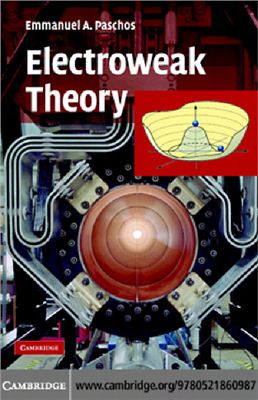Cambridge University Press, 2007, 245 pages
The electroweak theory unifies two basic forces of nature: the weak force and electromagnetism. This 2007 book is a concise introduction to the structure of the electroweak theory and its applications. It describes the structure and properties of field theories with global and local symmetries, leading to the construction of the standard model. It describes the particles and processes predicted by the theory, and compares them with experimental results. It also covers neutral currents, the properties of W and Z bosons, the properties of quarks and mesons containing heavy quarks, neutrino oscillations, CP-asymmetries in K, D, and B meson decays, and the search for Higgs particles. Each chapter contains problems, stemming from the long teaching experience of the author, to supplement the text. This will be of great interest to graduate students and researchers in elementary particle physics.
The electroweak theory unifies two basic forces of nature: the weak force and electromagnetism. This 2007 book is a concise introduction to the structure of the electroweak theory and its applications. It describes the structure and properties of field theories with global and local symmetries, leading to the construction of the standard model. It describes the particles and processes predicted by the theory, and compares them with experimental results. It also covers neutral currents, the properties of W and Z bosons, the properties of quarks and mesons containing heavy quarks, neutrino oscillations, CP-asymmetries in K, D, and B meson decays, and the search for Higgs particles. Each chapter contains problems, stemming from the long teaching experience of the author, to supplement the text. This will be of great interest to graduate students and researchers in elementary particle physics.

